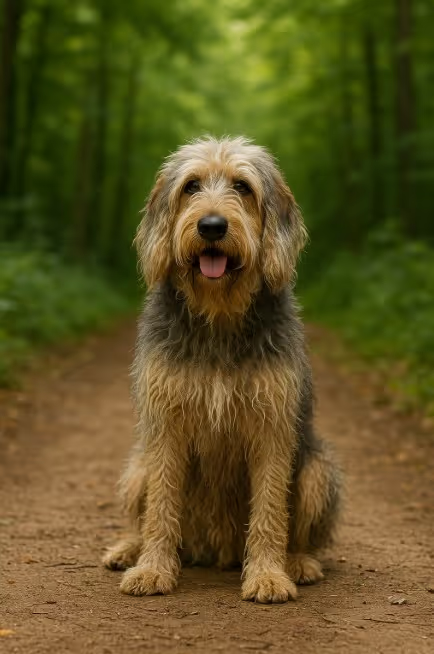The Otterhound is a rare, big-hearted British scenthound built for all-day tracking in water and on land. With a rough, waterproof double coat, webbed feet, and a melodious voice, the Otterhound is friendly, comical, and independent. They adore swimming, long hikes, and nose-driven games, then sprawling at home with their people. If you’re searching “Do Otterhounds shed?”—moderately. “Are Otterhounds good apartment dogs?”—possible for very active owners, but they’re happiest with space and daily outdoor adventures.

Developed in medieval Britain to trail and control river otters that threatened fish stocks, Otterhounds patrolled waterways with packs of hounds and mounted huntsmen. Breeding favoured an oily, weatherproof coat, immense nose, and endurance in cold rivers. When otter hunting ended in the 20th century, the breed’s numbers declined sharply; dedicated fanciers preserved the line as a companion and versatile scenthound. Today the Otterhound is one of the world’s rarest breeds, recognized by major registries (CKC/AKC/FCI) and cherished for its happy, clownish spirit and love of water.
Large, strong-boned, and shaggy with a classic scenthound outline.
Low trimming, but routine maintenance for that functional, shaggy coat.
An endurance hound that shines with purposeful activity.
Affectionate, clever, and nose-driven—train with patience and humour.
Fuel steady work while keeping a lean silhouette to protect joints.
Generally robust, but large, deep-chested and water-loving traits need attention.
Rare—plan ahead and verify health/temperament transparency.
Are Otterhounds rare?
Yes—among the rarest CKC-recognized breeds; expect waitlists with reputable breeders.
Do Otterhounds like to swim?
They love water. Webbed feet and an oily coat make them natural swimmers—always supervise and rinse after mucky rivers.
Do Otterhounds shed a lot?
Moderately year-round, heavier seasonally. Weekly grooming controls hair and odour.
Are Otterhounds hypoallergenic?
No. They are not hypoallergenic.
How much exercise does an Otterhound need?
Plan for 60–90 minutes daily plus brain work (tracking/nose games).
Do Otterhounds bark or bay a lot?
They have a musical voice and may bay when excited or on scent. Teach “quiet” and give scent outlets.
Are Otterhounds good with kids and other pets?
Generally friendly and gentle; supervise due to size and enthusiasm, and introduce carefully to small pets.
How hard are Otterhounds to train?
Moderately easy with positive methods—but that nose is powerful; prioritize recall and leash skills.